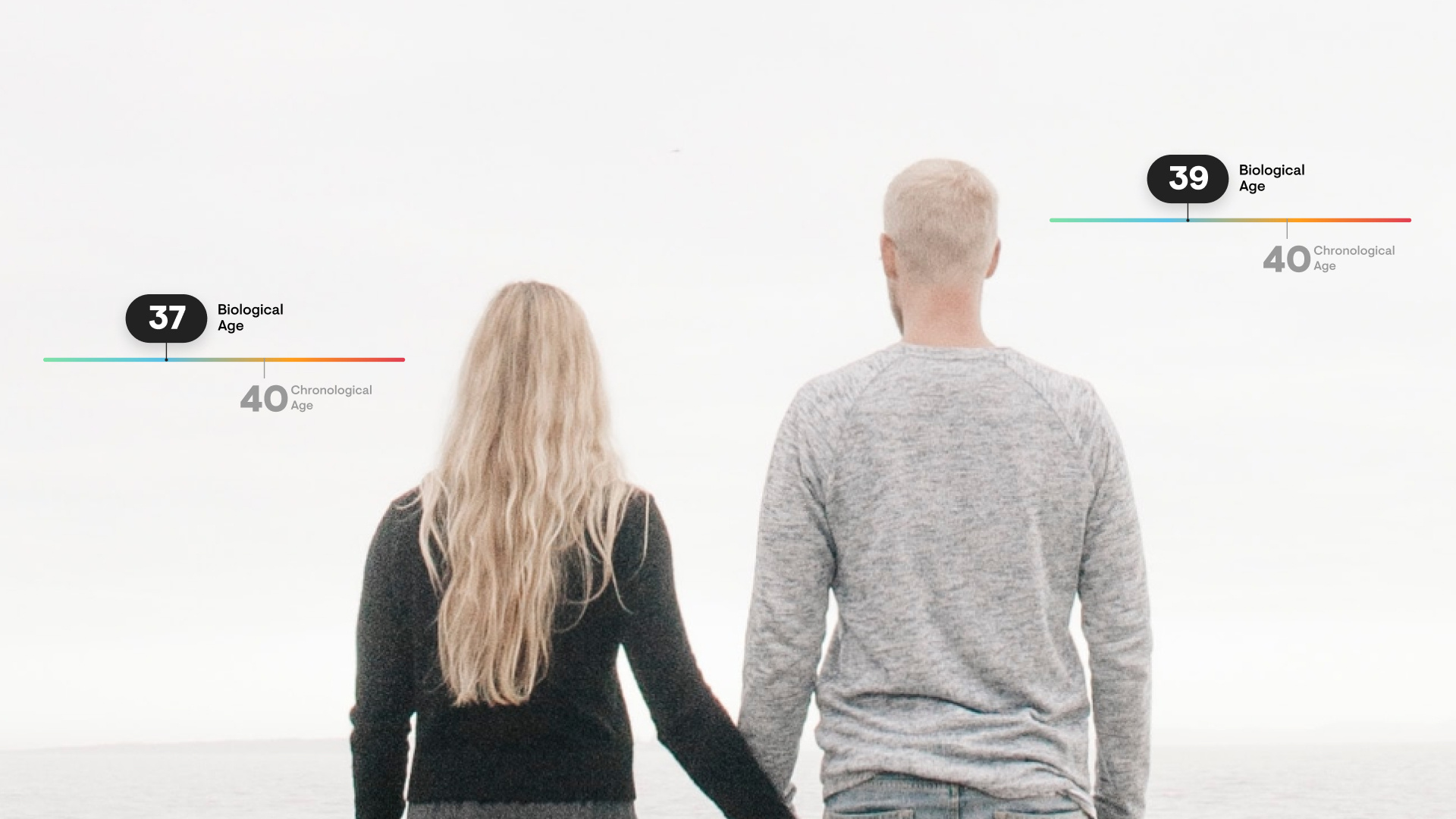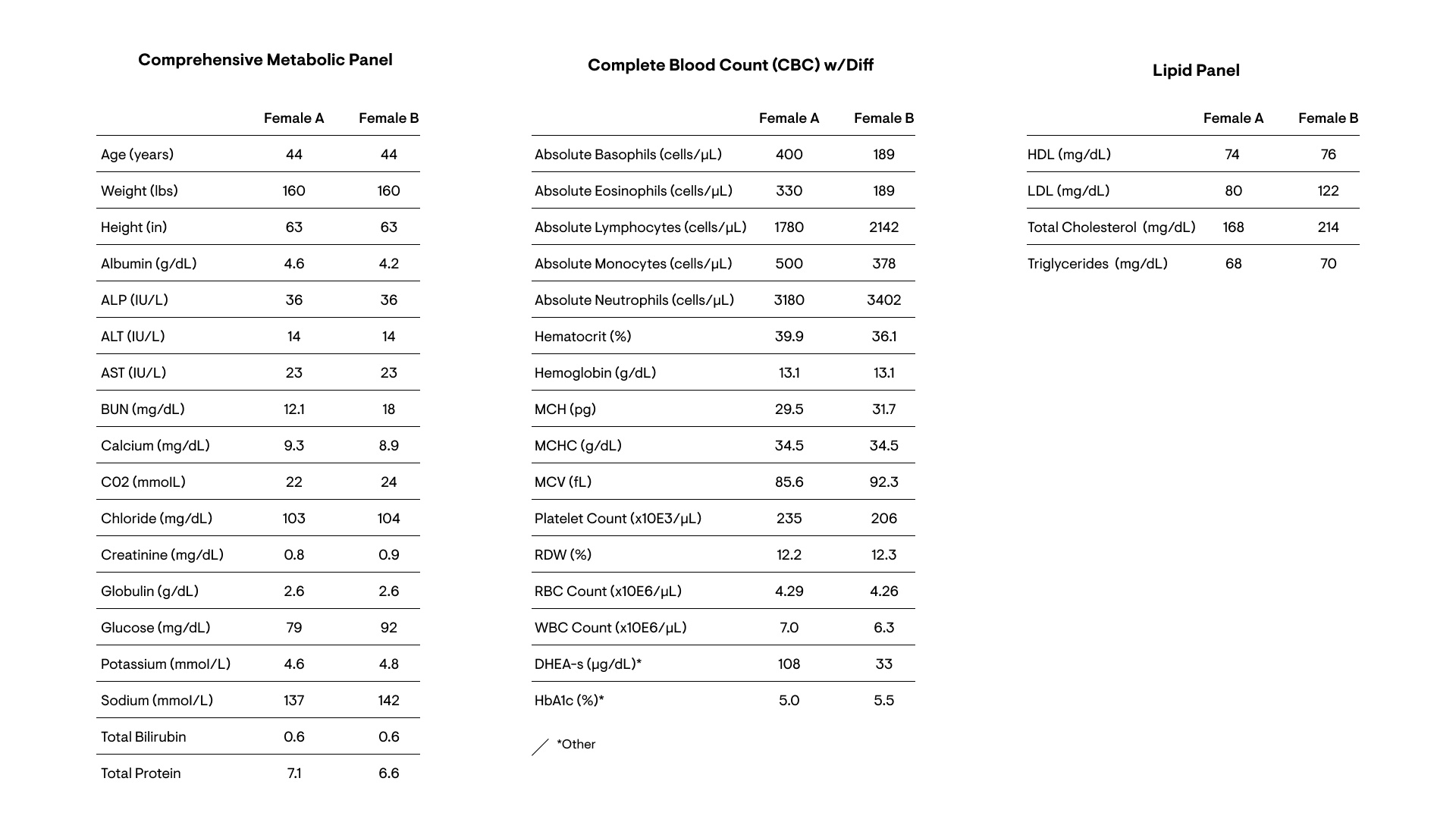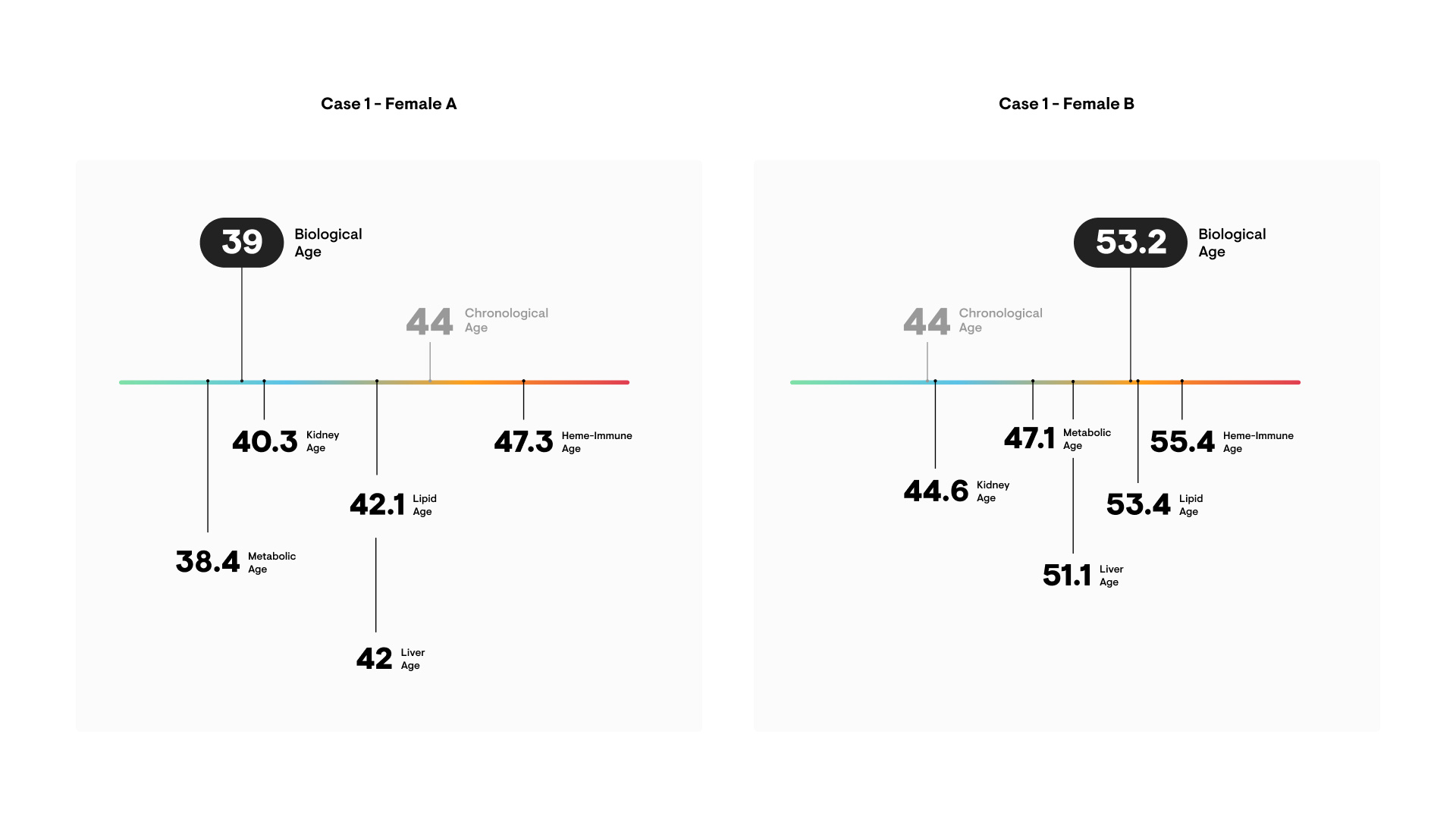Biological Age Comparisons Between Same Age, Same-Sex, and Different Sex Adults

Biological age is the age of someone internally, as opposed to chronological age, based on birthday. Thorne has launched a Biological Age Panel powered by Onegevity's Health Intelligence platform. It's a blood biomarker-based tool to evaluate internal age and learn how lifestyle, diet, exercise routine, weight, sleep habits, and stress levels have impacted your aging process.
What’s best about this assessment is that blood biomarkers are actionable. So the biological age you are today can be altered, and you can slow the speed at which your body ages over time, improving your risk for age-related disease and ultimately increasing healthy years of life.
This article helps clarify a common misconception in our health: just because your biomarkers are “clinically normal” doesn’t mean they are healthy or appropriate for your current chronological age or sex. Here, we take a deep-dive look at the blood biomarkers between two women and compare the labwork from a female to male as examples of how the Biological Age test can help you discern the difference between clinically healthy and biological aging using blood biomarkers.
Case study 1: Same age, different biomarker values
In this real scenario, we are comparing two ladies of the same chronological age. Both are 44 years old, have a similar weight, different stature, and have some differences in their age-related blood biomarker values. Almost all fall within a “clinically normal range” for age and sex. This example is a situation we see in clinical practice and shows the Biological Age test's trained algorithm precision. It can detect even the slightest differences between biomarkers, even though values are seemingly healthy from a clinical standpoint. Blood results are in Table 1, and these two females' Biological Age results are posted below.
Table 1
Despite being the same chronological age, Female A is maintaining a lower biological age compared to Female B. From a clinical biomarker standpoint, neither female is specifically unhealthy or would warrant significant medical interventions. Luckily, there are a handful of practices both females can implement to maintain or even lower their biological age and reduce their aging rate. Thorne's Biological Age reports provide recommendations and education driven by Onegevity's Health Intelligence platform.

Case Study 2: Same biomarker values, different ages
In this scenario, we took the values from Female A in Table 1 and changed her chronological age to be 27 years old and 67 years old. This example shows how the current chronological age relates to biological age. Thorne's Biological Age test uses blood biomarkers that naturally change with age. In this case, the blood biomarker values reflect a 39-year-old; the 67-year-old female with this panel looks younger, and the 27-year-old female looks older, biologically.

Since the values are the same as in Case Study 1, they are still considered within a clinically normal range, and a health care professional would not necessarily intervene with medication. Precise lifestyle recommendations can also help change the way these two people continue to age in the future.
Case Study 3: Same biomarker values, different sex
In this final example, we used the 44-year-old Female A’s blood work from Table 1 and compared it to a 44-year-old male using the same biomarker values, height, and weight as Female A in Case Study 1. This example is to show how the values look when comparing one sex to another.

Here, biological ages show a seven-year difference between the female and male’s biomarker set. The Biological Age test algorithm is trained to compare like individuals and will designate between males and females. Blood values in males naturally change at a different rate than females, and male’s risk for health-related and age-related conditions is not to be compared to that of females.
How it works
The Biological Age test algorithm was trained on hundreds of thousands of biomarkers from a vast population--- old and young, healthy and diseased, athletic or not. Each biomarker has an established level appropriate for a given age and sex and is assigned a co-efficient (or multiplier) based on how far away your value is from the chronological age-related level.
After you enter your recent blood work results, you complete a Health Profile, including health concerns, medications, nutritional and supplement intake, and exercise habits. This profile accounts for other variables affecting your biological age, for example, statin medications.
Blood biomarkers are inexpensive to analyze, should be checked regularly (we recommend every 3-6 months), and are modifiable. A change in diet, exercise level, sleep habits, and practices to relieve stress will change more than one biomarker and influence your biological age and the rate at which you age.
To learn more about your biological age, rate of aging, and how you compare to other adults, get started with Thorne's Biological Age Health Panel today.


 This site is exclusive to Thorne Retail customers.
This site is exclusive to Thorne Retail customers.